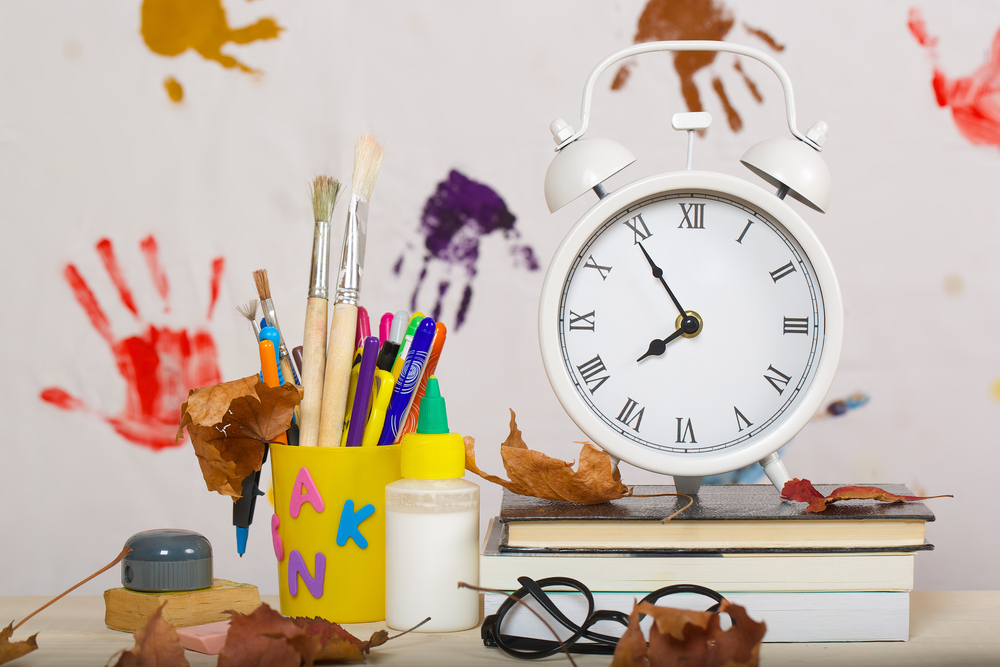Cursive writing practice Alphabet Worksheets for 9-Year-Olds
11 filtered results
-
From - To
Enhance your child's cursive writing skills with our engaging Cursive Writing Practice Alphabet Worksheets designed specifically for 9-year-olds! These worksheets provide a fun and interactive way for children to master the art of cursive writing, aiding in their motor skills and hand-eye coordination. Each worksheet features traceable letters and exercises that promote proper letter formation and fluidity. Not only do they reinforce writing technique, but they also support language development and literacy skills in a playful context. Perfect for home or classroom use, our worksheets are a fantastic resource to encourage artistic expression and boost confidence in young learners. Get started today!
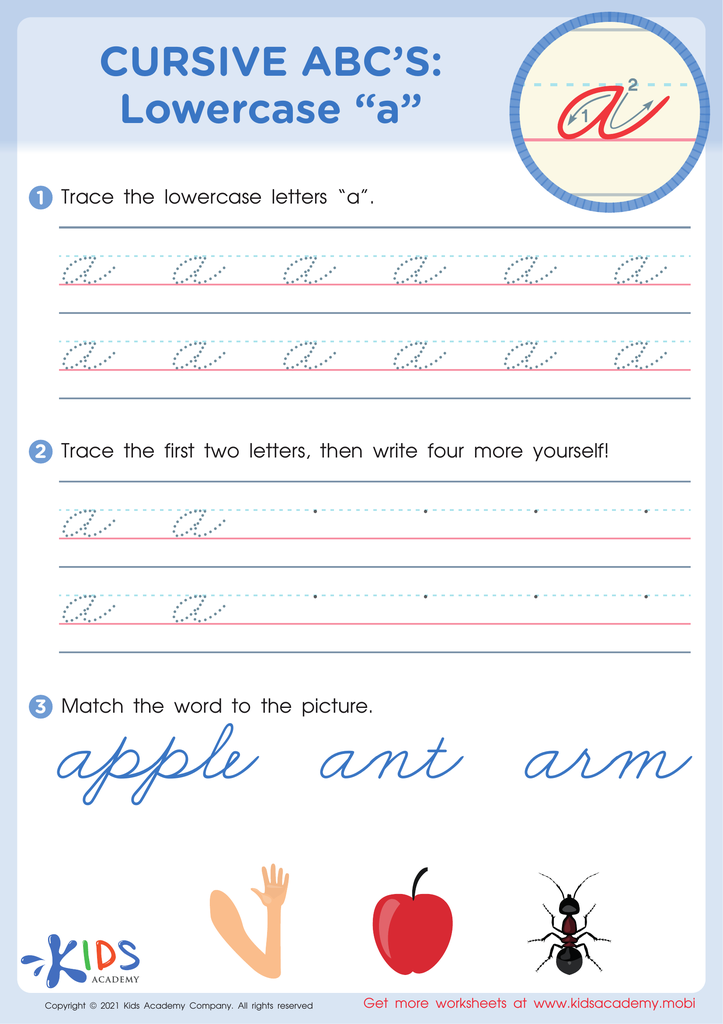

Cursive ABCs: Lowercase a
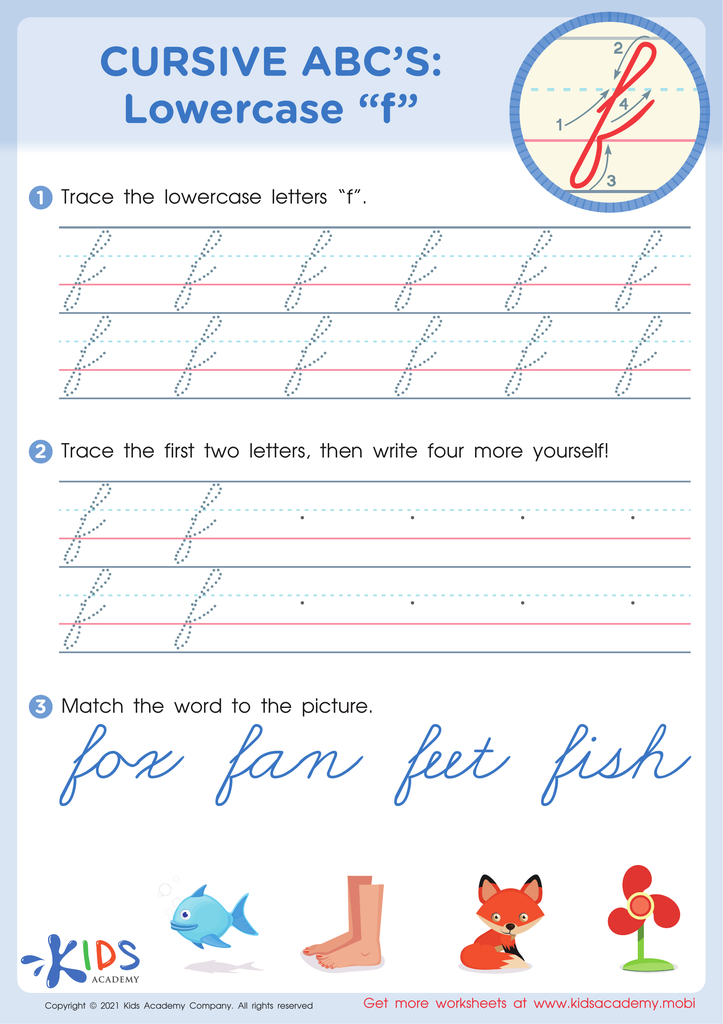

Cursive ABCs: Lowercase f
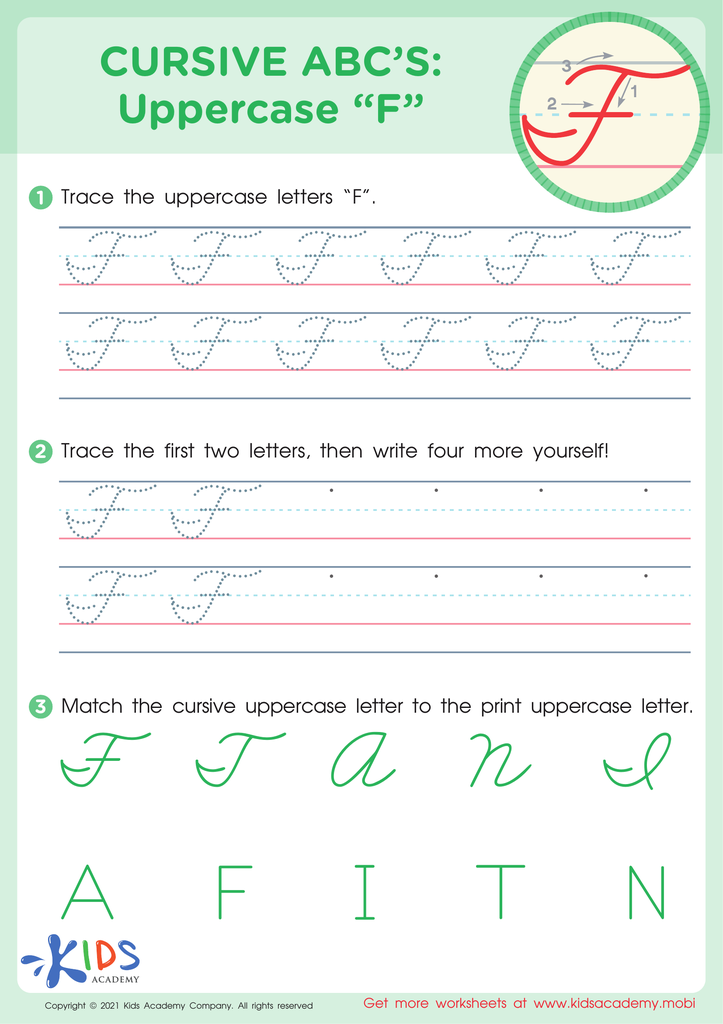

Cursive ABCs: Uppercase F
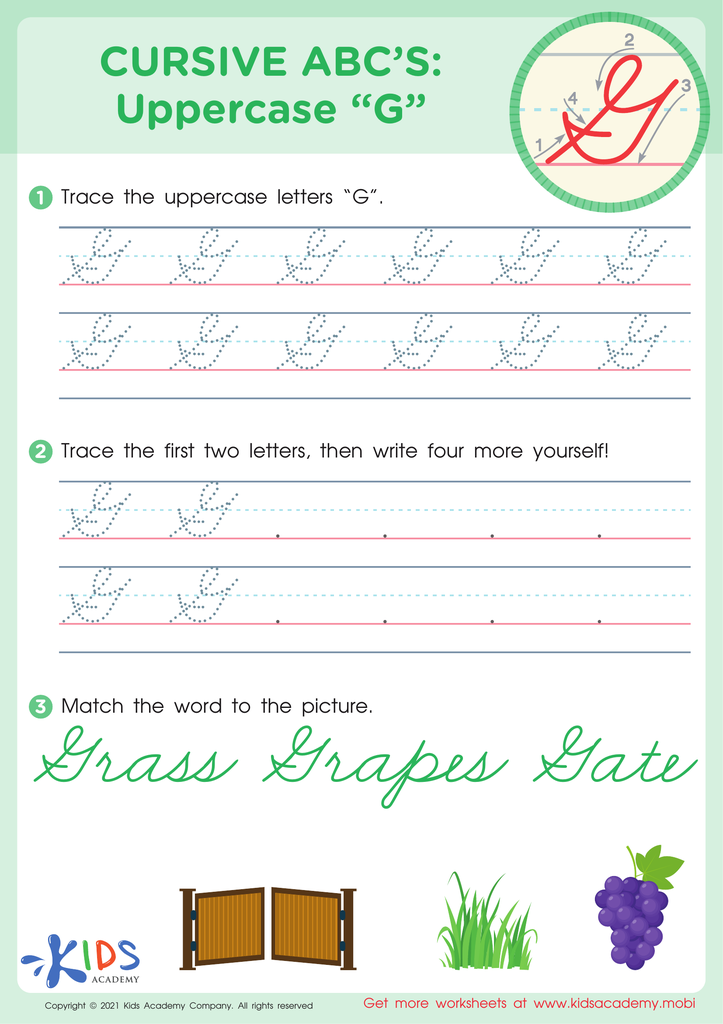

Cursive ABCs: Uppercase G
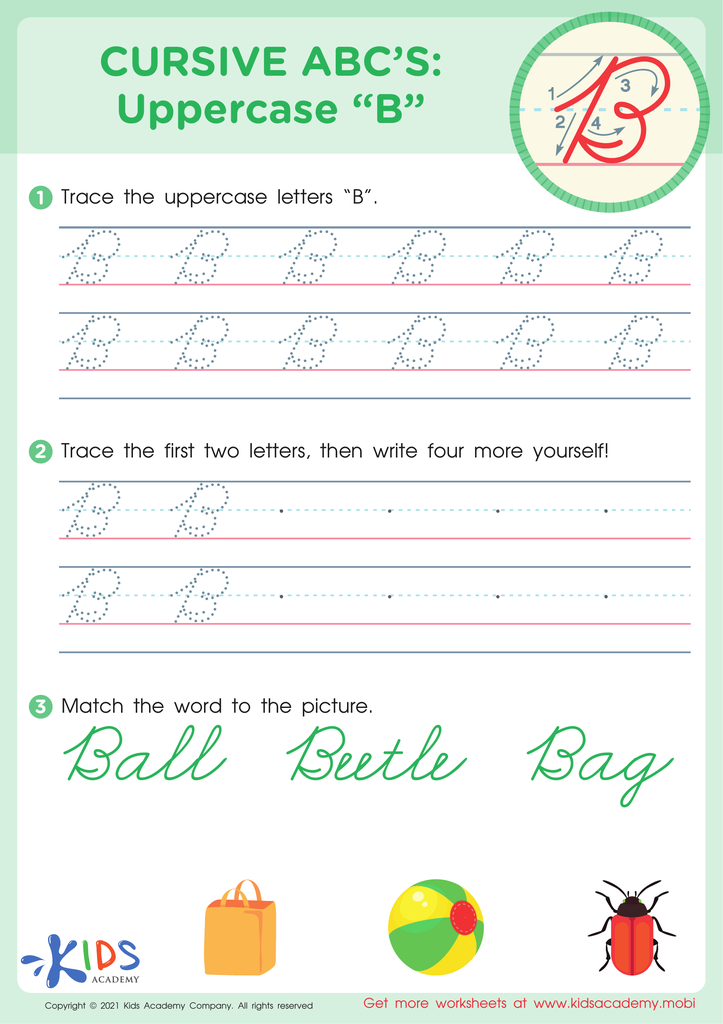

Cursive ABCs: Uppercase B
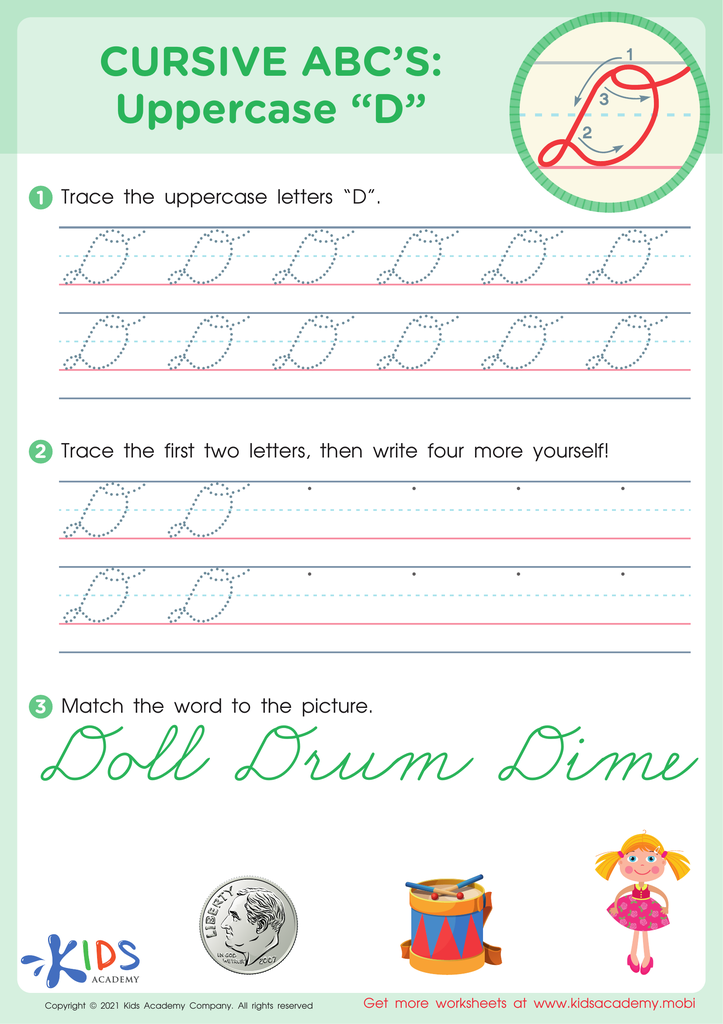

Cursive ABCs: Uppercase D
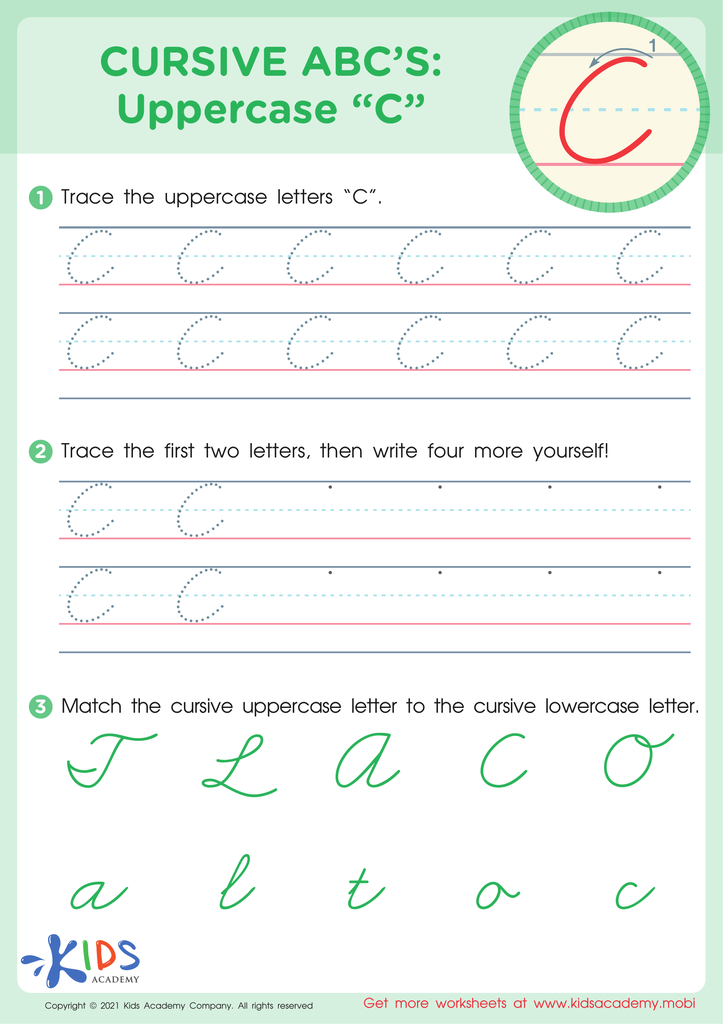

Cursive ABCs: Uppercase C
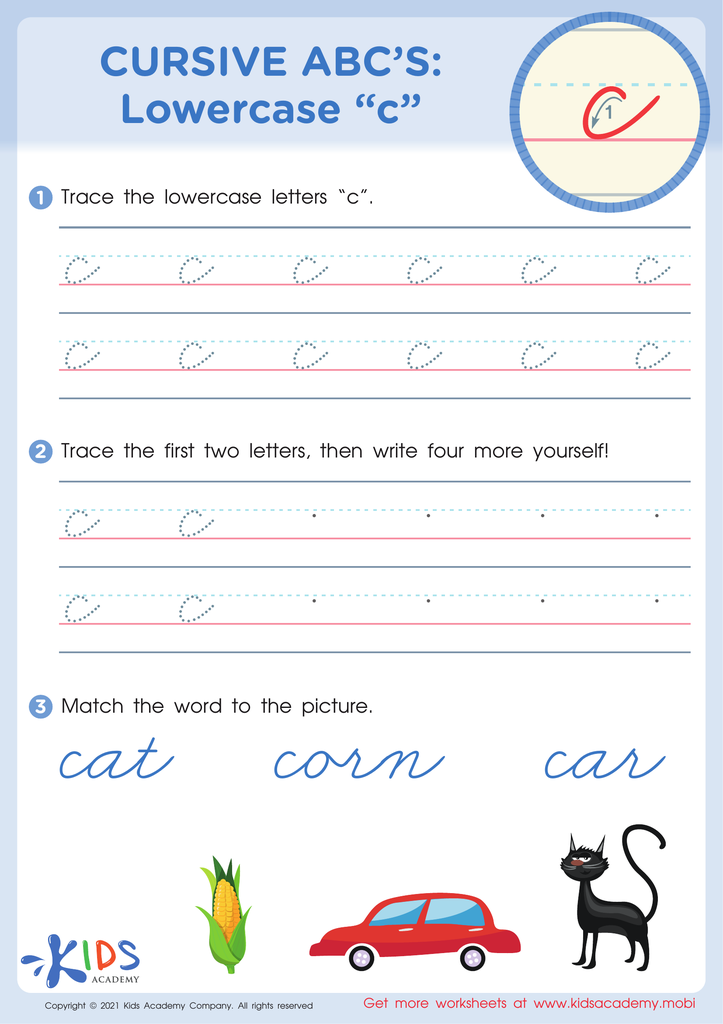

Cursive ABCs: Lowercase c


Cursive ABCs: Lowercase h


Cursive ABCs: Lowercase e
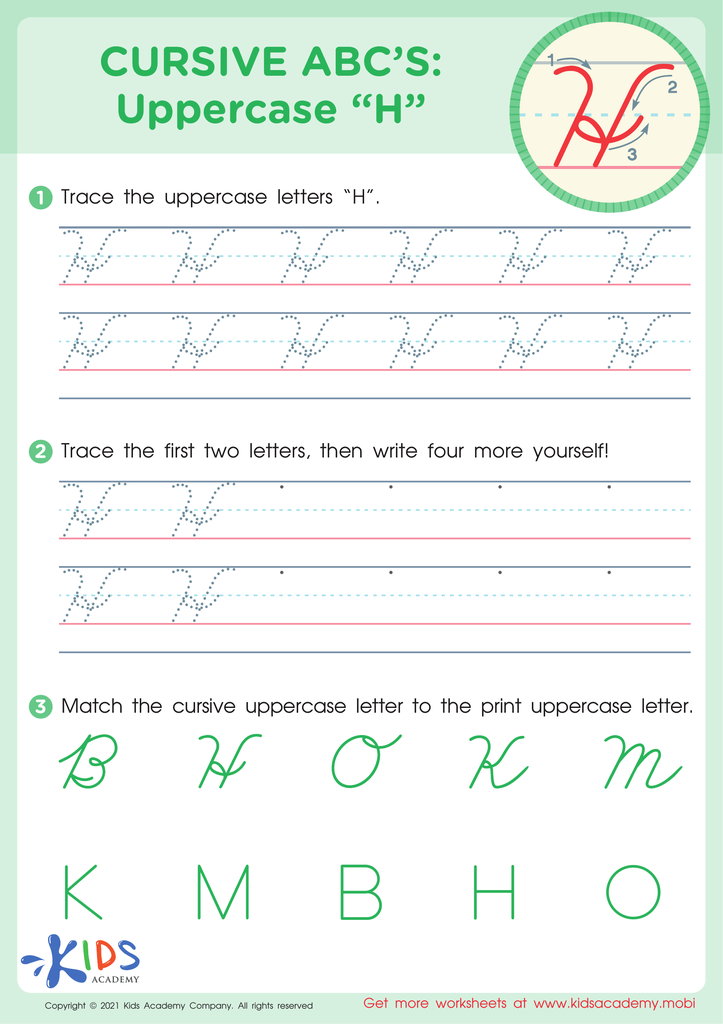

Cursive ABCs: Uppercase H
Cursive writing practice is essential for 9-year-olds, as it enhances fine motor skills and promotes cognitive development. At this age, children are refining their handwriting, and introducing cursive allows them to develop better control and fluidity in their writing. Cursive encourages children to connect letters, improving their speed and efficiency when taking notes in school.
Moreover, learning cursive can boost a child's self-esteem and confidence in their writing abilities. Cursive letters have a distinct aesthetic appeal, and mastering this form of writing gives children a sense of accomplishment. This form of writing also fosters creativity, as it allows for personal flair and style.
Additionally, with technology becoming increasingly prevalent, cursive writing connects children to traditional forms of communication, including historical documents and signatures. Understanding cursive is essential for reading cultural texts and engaging with writing that holds personal and historical significance.
Finally, practicing cursive also aids in building focus and patience—key attributes that support overall academic success. Therefore, it is crucial for parents and teachers to prioritize cursive writing practice, ensuring that children develop essential skills that will serve them well throughout their education and beyond.









